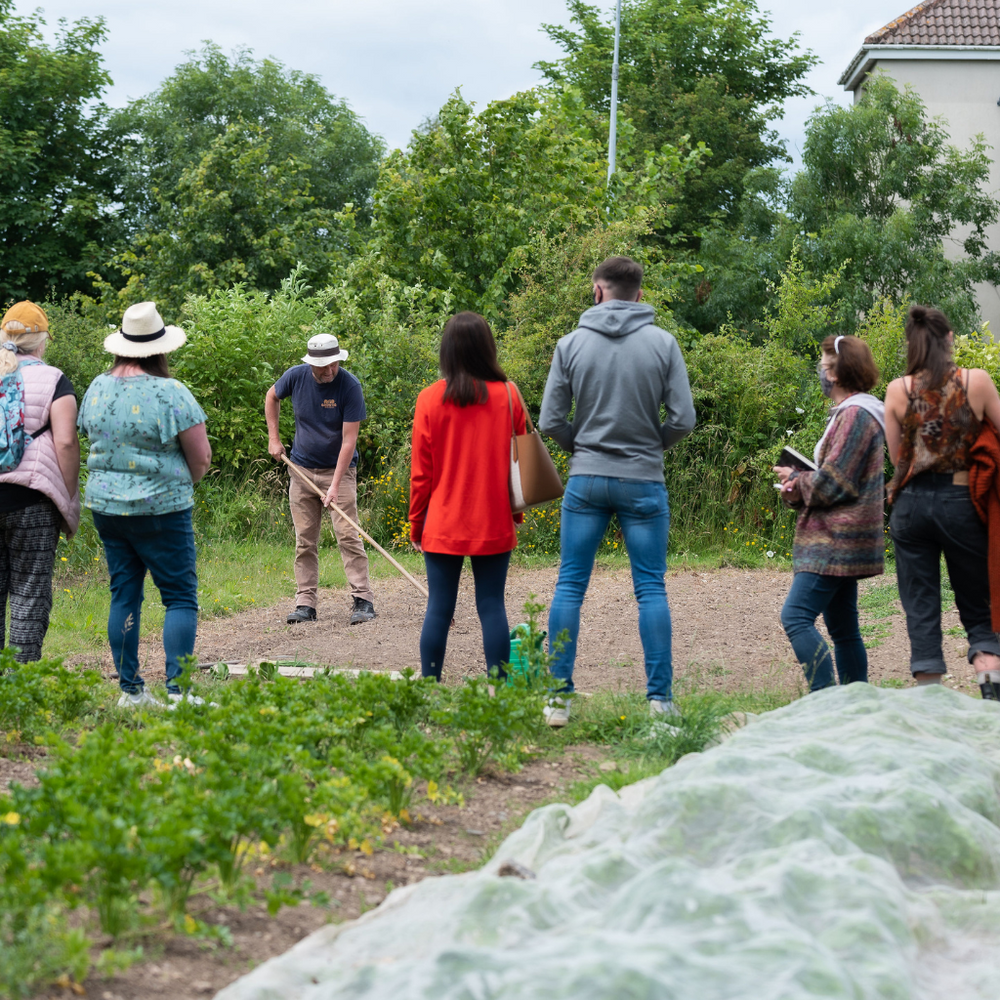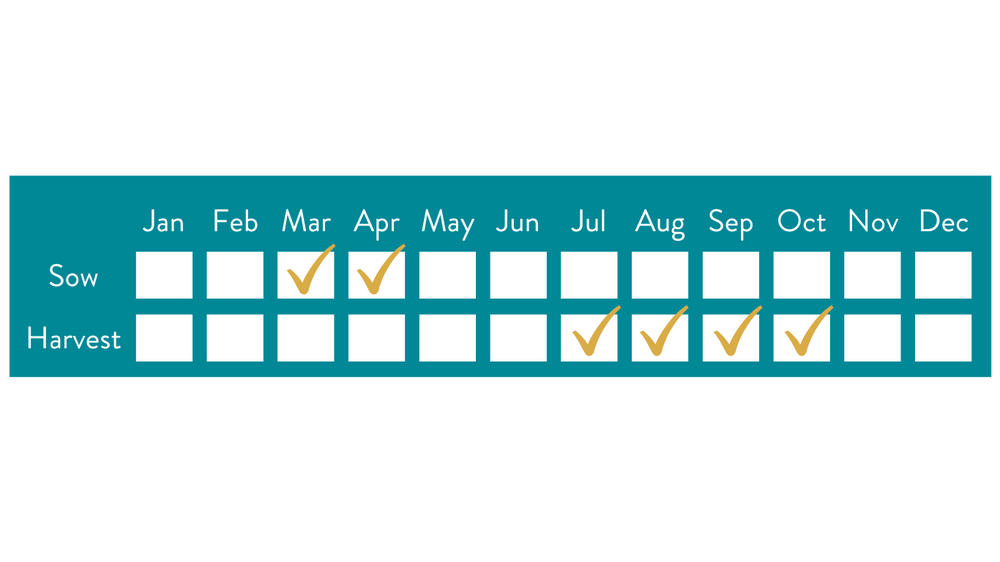
Video Guides
Need to build a raised bed? Or maybe you're battling those pesky slugs. We've got videos filled with easy and practical tips to help you in your veg patch.

Courses
Learn to grown, cook and eat some of your own food with our courses held at GROW HQ.

Tomatoes
Veg Type:
Fruit
Growing Location:
Indoors and Outdoors

Why Grow It
Few vegetables have suffered at the hands of the commercial food chain as much as the tomato. The simple fact of the matter is that most of the tomatoes that we buy year-in, year-out in our supermarkets taste of absolutely nothing at all. It is not until you grow your own that you realise this.
Commercial growers pick varieties that have thick skins so that they last longer and are less prone to wastage in storage and distribution. On the other hand, the homegrown tomato is a delectable treat – a meal in itself, best eaten fresh in the warmth of the greenhouse for maximum effect.
Tomatoes do require a certain level of TLC (pinching out sideshoots, watering, feeding, etc), but it’s definitely worth the effort.
Recommended Variety
- Tigerella
- Rosada
- Sungold F1
- Shirley F1
- Beefsteak
Sowing
- The soil needs to be fertile for tomatoes, so the addition of compost and a general fertiliser is usually beneficial.
- If growing in containers then use good quality potting compost.
- Tomatoes need to grow in warm temperatures so a greenhouse will give you the best results, but you can also try growing at a sunny windowsill.
- Tomatoes are usually grown in a glasshouse or polytunnel in Ireland. Some people have had success growing outside in a warm summer, but in a poor summer they are a very difficult crop outdoor.
- Tomatoes can be grown in soil or containers – management is easier in the soil, but successful crops can be produced in large pots or grow bags.
- Sow seeds in 2cm deep pots or module trays in March, indoors on a heated mat, in a greenhouse or a warm, sunny spot.
Growing
- Tomatoes can be planted out into the polytunnel from mid-April onwards.
- Plants sown in pots in March will be ready for transplanting when they are about 12-15cm high – space out plants 60cm each way.
- If growing tomatoes in containers we suggest giving your plant liquid feed regularly. Liquid feeding is unnecessary when growing in fertile soil. Learn how to make your own here.
- Tomatoes are either bush varieties or tall (cordon) varieties. Bush varieties are left largely untrained to grow. The tall varieties are trained up a single stem – this requires a way of supporting them and regular pruning. Support can either be a stake or a vertical string tied to a horizontal wire. If a string is used then this can be loosely tied to the base of the tomato, which is gently wound around the string as it grows.
- Pruning consists of the regular removal of the side shoots that grow from the stem at the base of the leaves. This is to keep the plant manageable and allow good airflow. Leaves are removed, starting at the base, once the plant has reached around a metre tall.
- Continue removing leaves as the fruit trusses ripen up the stem. This is to allow airflow around the plants.
- Finally remove the growing tip in late August – this is because any fruit set after this would not have time to ripen.
- Tomatoes need over 10 litres of water a week. For plants growing in the soil this can be given weekly in one watering. Daily watering is usually needed in containers or grow bags.
Harvesting
- The first tomatoes should be ready in late June/early July and cropping can continue into October or early November.
- Harvest when the fruits are ripe.
- Fruit will split if left on the plants so remove as it ripens – surplus fruit can be made in to sauces for the freezer.
- You are likely to be left with lots of green fruit at the end of the season – use these for chutneys.
TIPS
- For effective watering, sink a pot in the ground beside the plant and water in to this. This gets water right down to the roots.
- At the end of the season put a layer of green tomatoes in a drawer with a ripe apple or banana. These ripening fruits give off the ripening gas ethylene, which encourages the tomatoes to ripen.
- Bake surplus tomatoes in the oven for 8 hours on a very low heat – cut them in half first and drizzle with some oil and salt. These sundried tomatoes can be stored in olive oil or frozen.
- When you remove a side shoot from the plant, instead of throwing it out, stick it in a pot of compost – it will become a brand new tomato plant that can be planted out later to prolong your cropping season.
Problems
- Blight is the most serious problem. This can be prevented by keeping the leaves dry, so water at the base of the plant, ventilate well, and allow good airflow around the plants. If blight does develop then remove any infected leaves and discard outside the tunnel. Avoid walking through an infected potato patch prior to entering the tunnel.
- Soil borne root diseases can be a problem. If you keep up good organic matter levels in your soil and only grow tomatoes in a bed every second year you should keep these at bay. If they do become a problem it is best to grow in containers of potting compost.
- Split fruit and “blossom end rot” can be a problem in container grown tomatoes, but are less of an issue in well-managed soil-grown tomatoes.
Our food system is broken and at GIY we believe that nurturing a real connection to where our food comes from is the key to fixing it.
We're on a mission to inspire a global movement of food growers, one GIYer at a time.
Sign up to be the first to hear about all things GIY.













